Social media has become a key global influence that dictates our lifestyle.
With the expanding scope of social media platforms, social commerce is also on the rise.
Brands understand the importance of social platforms and have begun utilizing them to market and even sell their products.
Today, e-commerce businesses have a significant presence in the digital environment, from targeted websites to pop-up ads.
From social media sites to video platforms, brands implement effective strategies to reach wider audiences and promote products.
Here are some interesting social commerce statistics to better understand the impact of social media platforms on e-commerce.
Top Social Commerce Statistics
80% of consumers engage in digital shopping.
27% of internet users prefer discovering products through social media over any other channel.
54% of social commerce buyers are concerned about the legitimacy of online shopping.
Average retail social commerce sales in the US are $937 per buyer.
Chinese consumers spent about $352 billion on social commerce in 2021.
Douyin, a Chinese short-form video platform, is predicted to reach US $200 billion by the end of 2025.
Build trust & FOMO
Highlight real-time activities like reviews, sales & sign-ups.
Defining Social Commerce: Shopping Meets Social
Social commerce is the purchase and sale of products directly on a social media platform.
Brands create a presence on these platforms and market products.
Social commerce is a rapidly expanding branch of e-commerce that has tremendous potential to attract global consumers.
Social commerce also influences e-gaming and virtual currencies.
The companies producing games generate a significant amount of income through these purchases.
Gamers are always on the lookout for items that give them a competitive advantage and are willing to pay a fair sum for them.
Similarly, certain apps require currencies or coupons that can be used to buy items. These can be purchased from the in-app store.
Shoppable ads also help brands sell products directly.
Here, the post on social media markets a product and provides a Call To Action that can take the consumer directly to purchase.
These are becoming increasingly common as consumers find them convenient and companies generate a good amount of Click-Through Rates.
Why Social Commerce Is Booming in the Next 5 Years
The social media space is ever-evolving, with new users entering the space daily.
The social media market is all set for a drastic increase in usage in the next 5 years.
Social platforms are adding shoppable features to their apps to make product marketing and purchase easier for consumers and companies.
These platforms also use sophisticated algorithms that personalize product recommendations to users based on their internet behavior.
Consumers depend on social media influencers for reviews and recommendations.
Therefore, brands are incorporating influencer marketing to increase their credibility and attract more consumers.
Social media is present globally, and you can view products from any part of the world while sitting at home and even purchasing them.
This feature of social channels is very advantageous to social commerce sales.
All these social commerce features combine to drive sales. Thus, with increasing users and social media influence, social commerce is meant to reach new highs in the upcoming years.
Social Commerce Market Size & Statistics
The social commerce market is expanding day by day and is reaching new heights every year.
Here are some key statistics:
Social Commerce Revenue Projections
The social media market is predicted to grow over the upcoming years. Some predictions are:
1. The CGAR predicted from 2023-2030 for social commerce, according to Grand View Research, to 31.6%.
2. The Social commerce market is set to reach a penetration rate of 24% by the end of 2025.
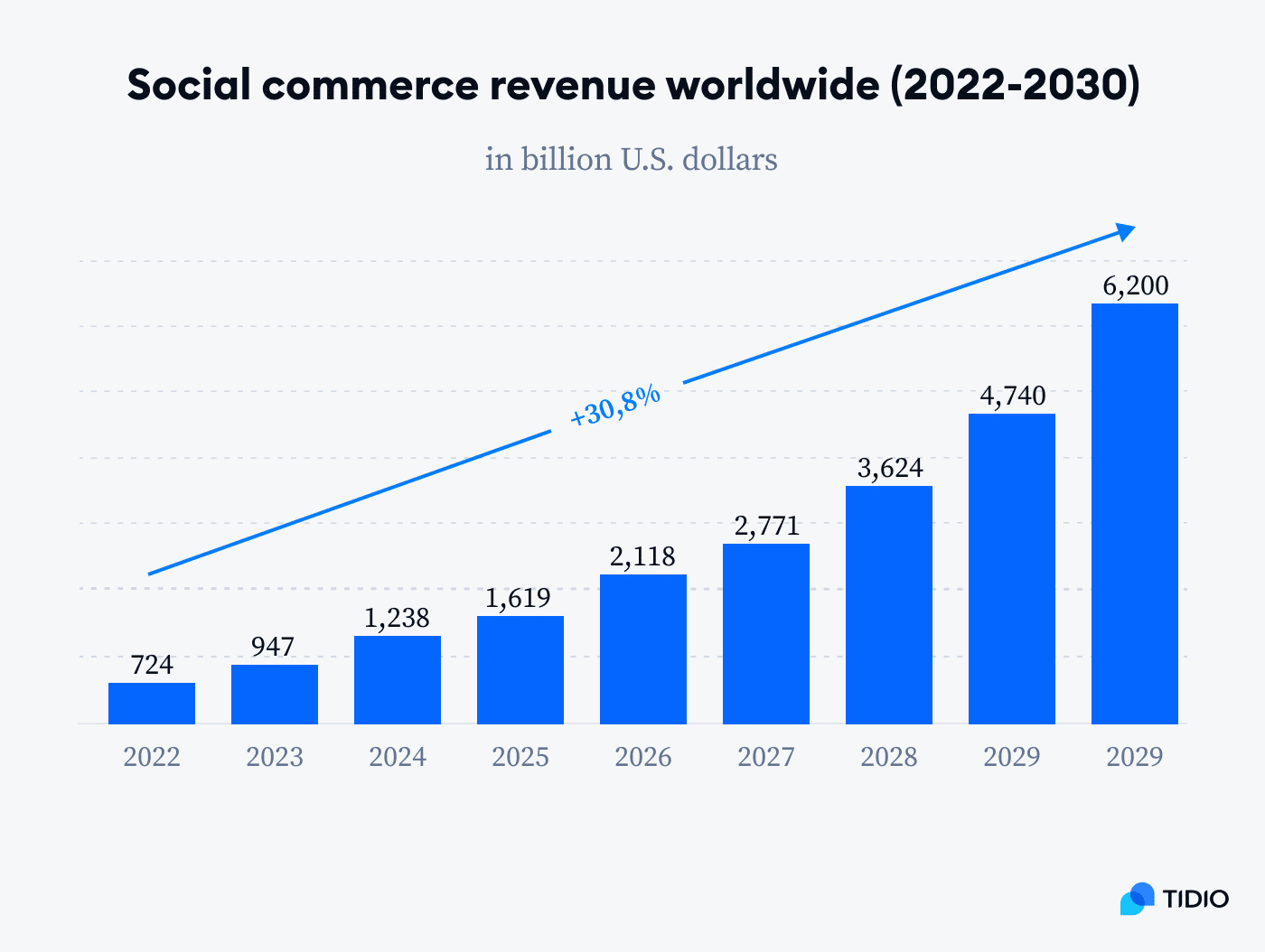
3. Tidio predicts that the social commerce market will likely grow by 30.8% by 2029.
4. The social commerce market is predicted to reach at least $8,885.5 billion between 2023 and 2030.
Also read: 32 Social Selling Statistics & Trends (New Data)
Build trust & FOMO
Highlight real-time activities like reviews, sales & sign-ups.
Regional Variations in Social Commerce Growth
Social commerce is growing at a rapid pace. Some regional statistics are:
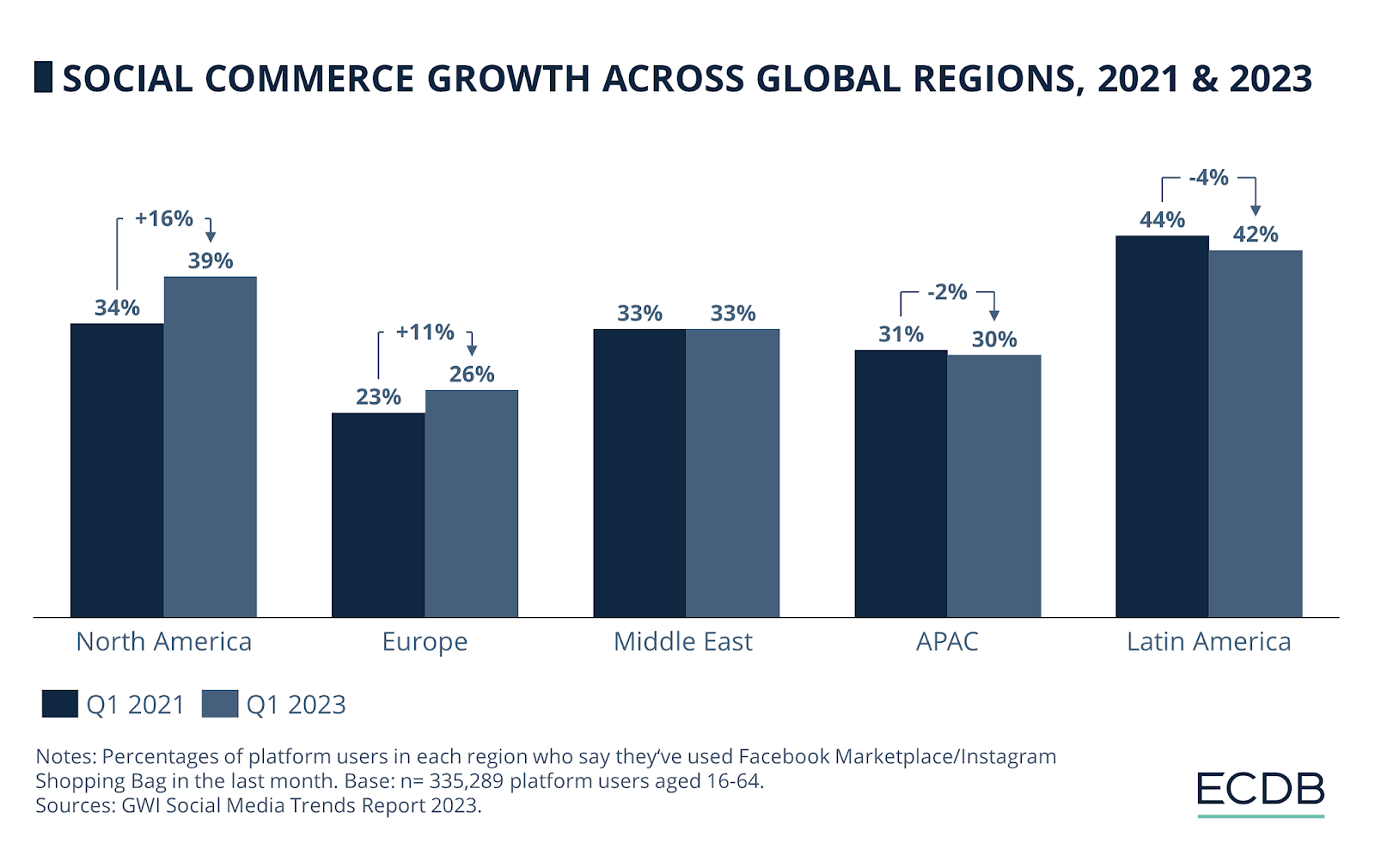
5. North America saw a 16% jump in social commerce in 2023. At the same time, Latin America saw a 4% decrease.
6. Facebook is the most popular platform in Europe, holding almost 80% of the market share.
7. The social commerce market in the Asia Pacific accounted for about 70.4% of revenue share in 2022.
8. Over 70% of online shoppers use social platforms to discover e-commerce businesses in the Middle East
Percentage of Social Media Users Making Purchases
Some statistics about the social media commerce buyers are:
9. 53%of global internet users say they plan to shop more through the social commerce market.
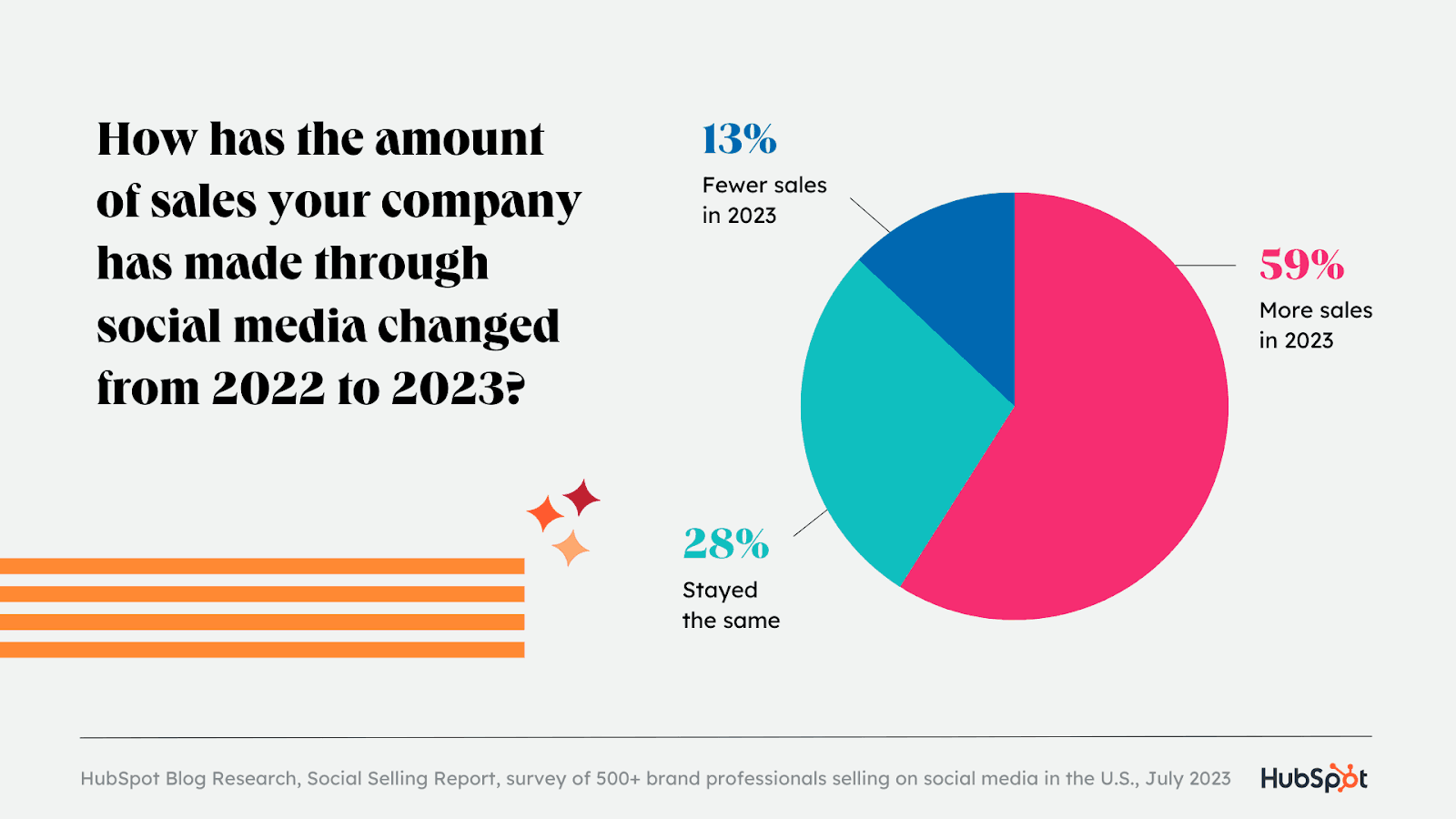
10. 59% more companies saw an increase in sales on social media platforms.
11. According to Hubspot, 27% of internet users prefer discovering products through social media over any other channel.
This means that social commerce has a very high demand, and brands can effectively target audiences for potential sales.
12. According to another research by Hubspot,.54% of social commerce buyers are concerned about the legitimacy of online shopping.
Though social media users shop online and brands invest in social commerce adoption, legitimacy and concerns about fraud remain.
Social Commerce Penetration Rate by Country
Here are some social commerce market details by country:
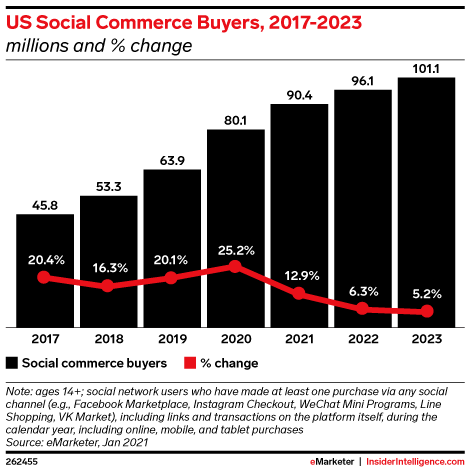
13. There were 101.1 million social commerce buyers in 2023.
14. In the UK, 28% of small businesses report social media channels as their primary revenue generators.
15. Consumers in China spent about $352 billion on social commerce in 2021.
Chinese e-commerce relies heavily on social commerce. Almost all consumers have bought at least one product online in the year.
16. The penetration of social commerce in the UAE is predicted to reach 26% by 2025.
Age Demographics of Social Commerce Shoppers
Age plays a major role in accessing digital space. Some age-based statistics are:
17. Younger consumers prefer shopping on digital storefronts, with a rate of 60%.
18. 7 out of 10 digital buyers between the ages of 27 and 42 have made purchases through social shopping.
19. 61% of those aged 24-34 years prefer using social media to make online purchases.
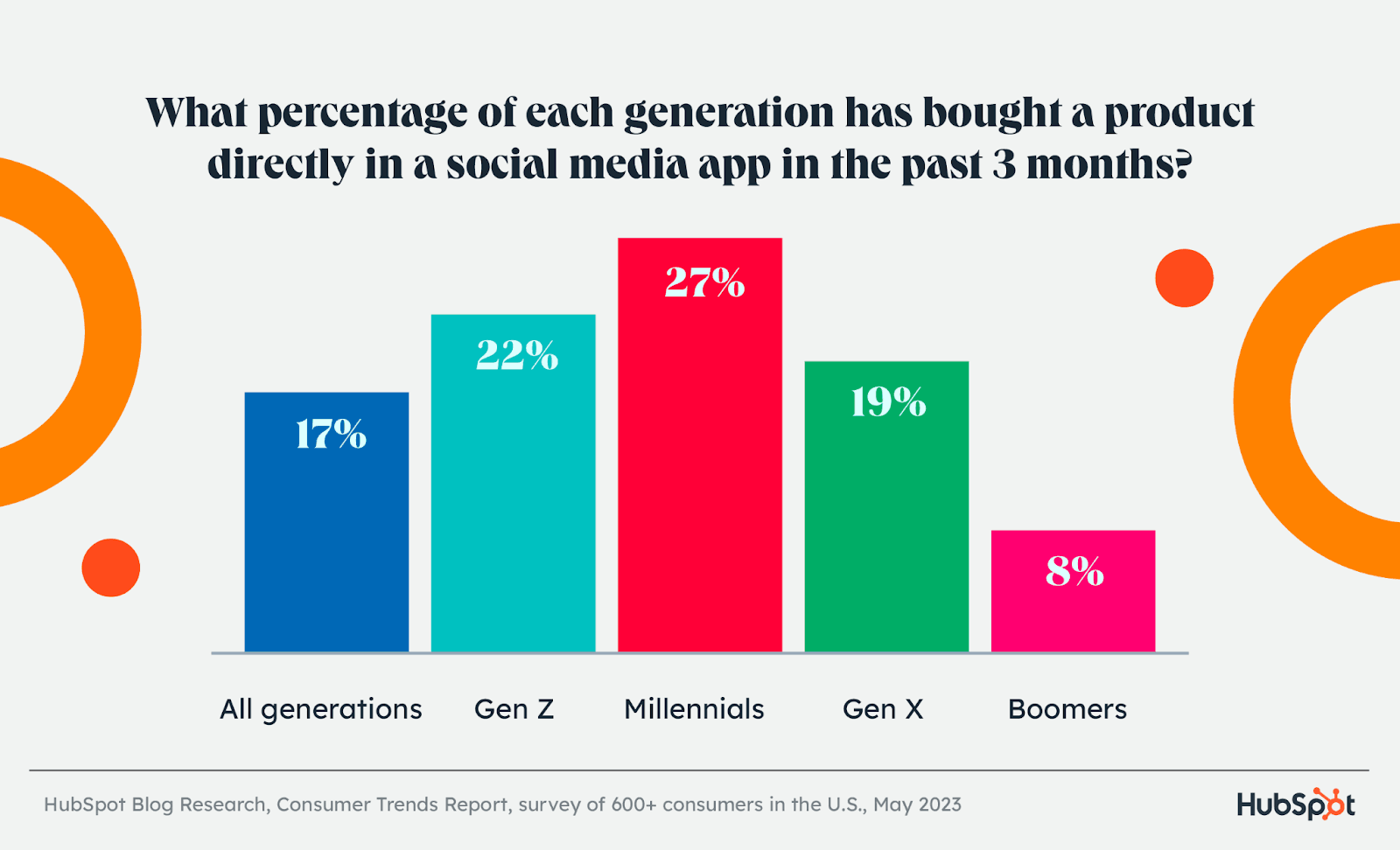
20. 27% of millennials bought a product on social media platforms.
Build trust & FOMO
Highlight real-time activities like reviews, sales & sign-ups.
Social Commerce Platforms Statistics
The social media channels are the main focus of social commerce. They drive billions in sales. Here are some important platforms that play a significant role and how they affect the market:
Facebook Shops
Facebook is the leading social commerce platform around the world. With the highest number of monthly users, this app supports various ways to make it easier to seamlessly browse the platform. Some key stats regarding the app are:
21. 63.5 million people made at least one purchase through Facebook.
22. Facebook has about 250 million digital storefronts worldwide.
23. Around 4 in every 10 Facebook users shop on the platform.
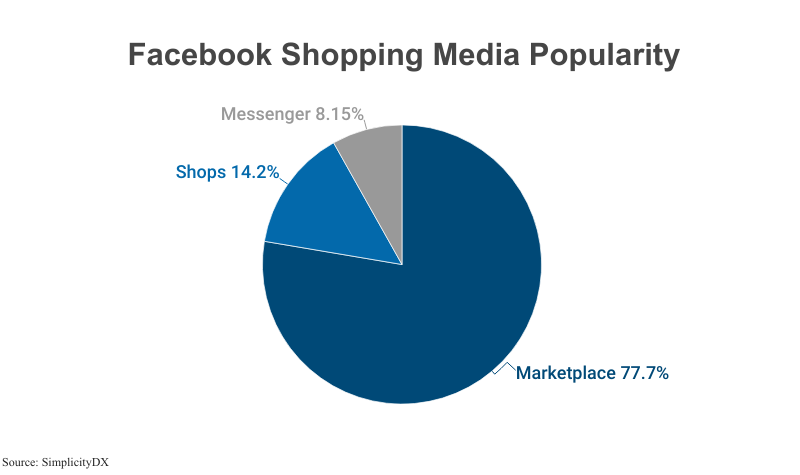
24. Facebook marketplace is 77% popular among social buyers.
Instagram Shopping
Instagram is the second most famous social commerce app. Many users love to see user-generated content on the app before making purchasing decisions. Some interesting facts are:
25. 44% of Instagram users shop on the platform every week.
26. 98% of fashion brands use Instagram for marketing purposes.
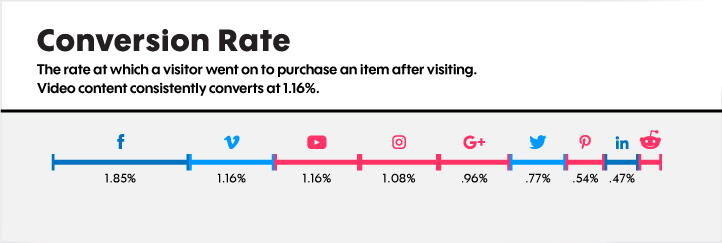
27. Instagram has a conversion rate of 1.08%. That means around or more than 21.6 million consumers interact or purchase products from marketing posts.
28. Instagram’s revenue is estimated to exceed $37 million in 2025.
Tik Tok
TikTok is emerging as a game changer in the world of social commerce, surpassing YouTube in the social commerce market. Some related figures are:
29. TikTok (international version) is expected to generate $20 billion in revenue this year.
30. TikTok was the number one platform for impulse buys in 2022.
Pinterest is a space that inspires aesthetic appreciation and fuels impulse buys.
Pinners always surf this social media app before buying anything to know about as many options as possible. Some interesting stats about Pinterest are:
31. 50% of Pinterest users say they see it as a shopping app.
32. 85% of weekly users say they have purchased after seeing a pin.
Other Platforms
Besides the popular apps, other social commerce platforms also generate significant social spending.
33. Douyin, a Chinese short-form video platform, is predicted to reach US $200 billion by the end of 2025.
This platform is one of the most famous social commerce platforms in China.
34. 2.49 billion people use YouTube for marketing purposes.
Social Commerce Trends
An average person spends at least one and a half hours on social media.
They come across various interesting things that capture their attention. This gives rise to various trends daily.
Marketers use these as guidelines to target audiences and market products.
Some trends in social commerce are:
Live Stream Shopping
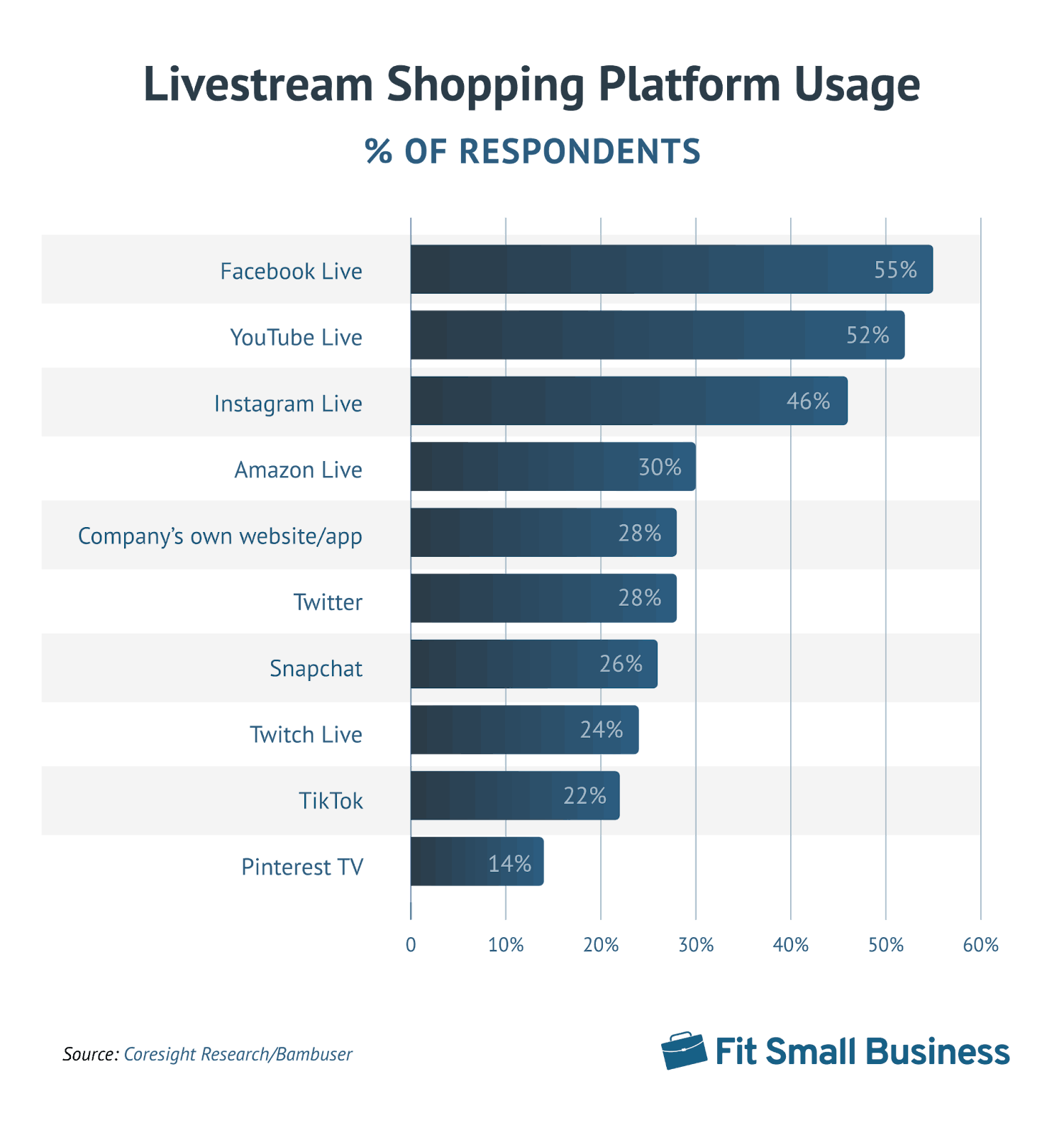
35. Facebook Live and YouTube Live have the most respondents to live shopping, at 55% and 52%, respectively.
This is a relatively new form of social commerce.
In this, Consumers and stream viewers can see demonstrations about a product, ask questions, connect with the vendors, and make direct purchases on the stream itself.
Augmented Reality (AR) Try-On
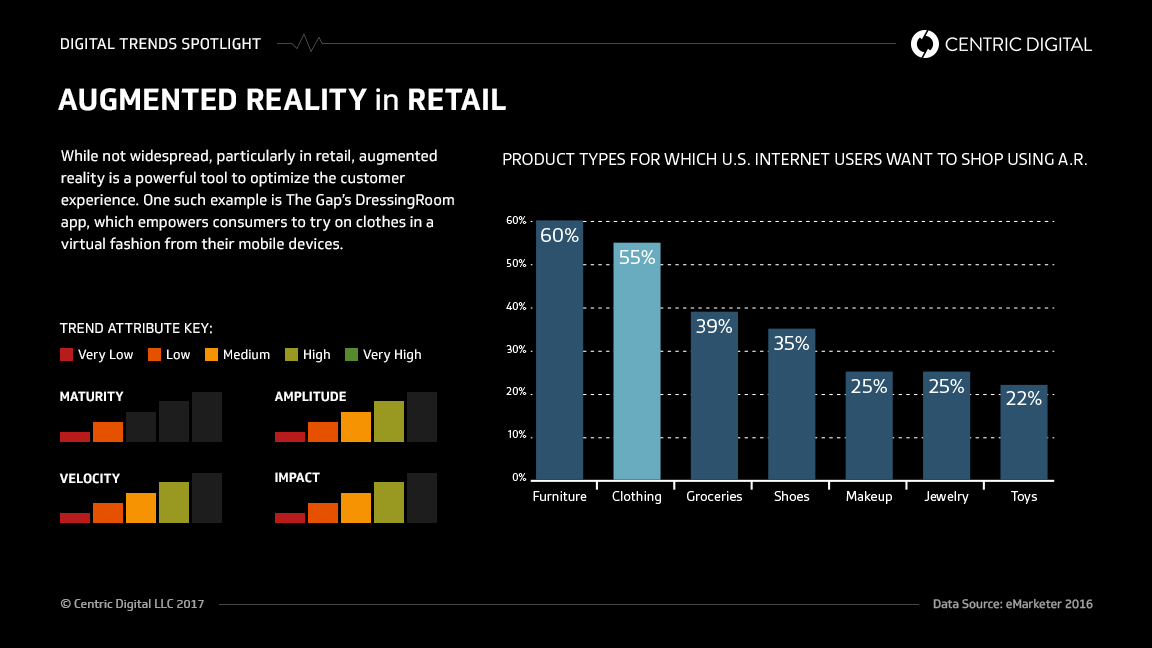
36. In the US, AR has a particular target audience for furniture shopping, 60%.
AR try-on helps consumers try on products like make-up, clothes, and accessories using augmented reality.
It may also be used to try furniture in your space. Social commerce has seen significant growth in using AR to market products.
Short-Form Video Content
37. 81% of marketers say that short-form videos directly influence sales.
This type of content has gained fame since TikTok and Instagram reels have been introduced to the world.
Creating engaging content using a 90-second video is far more beneficial to sales as it influences potential customers and dictates positive consumer attitudes.
Wrap up
As the social commerce market size increases almost every day, consumers discover new trends and drive sales.
These trends dictate how businesses market their products. The social commerce market is very dynamic, and marketers should make thorough use of its global reach to increase their customer base.
The statistics reported in this blog helps you understand the impact social commerce has in the e-commerce space and how the social commerce market size is predicted to grow in the coming years.
Sources








